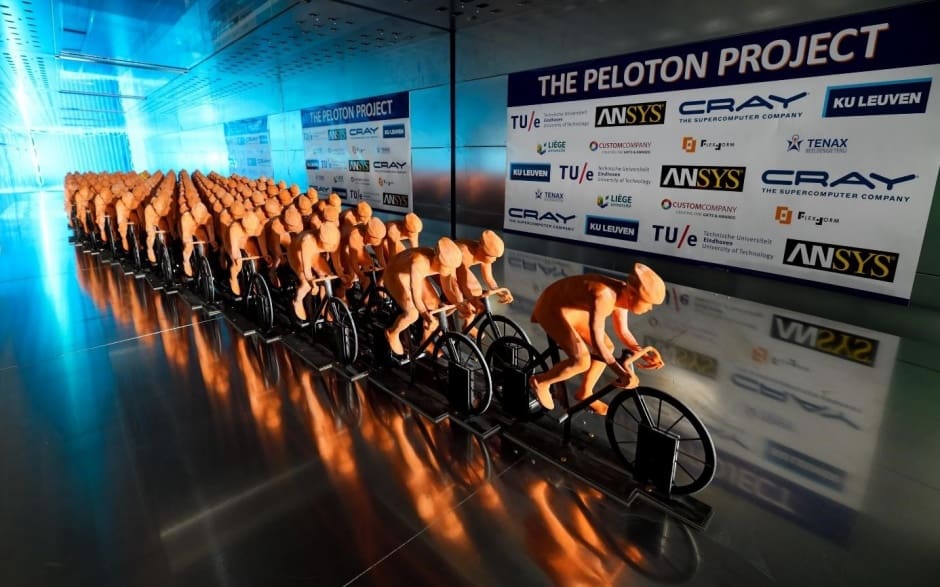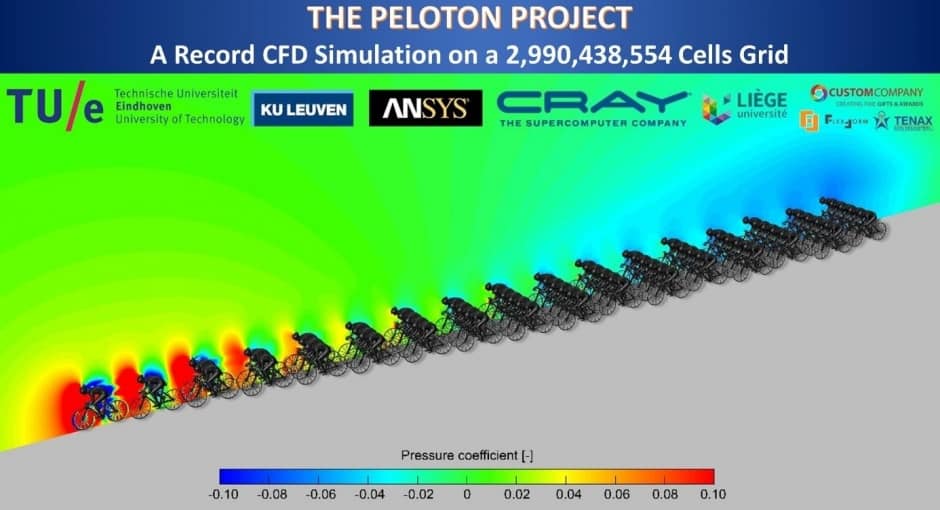
It's only a few days before Chris Froome, Mark Cavendish, Andre Greipel and their hundreds of teammates and rivals set off on the world's most famous bicycle race, the Tour de France – three weeks of zipping through the French countryside, up and down mountains and through cities and towns, accompanied by a huge publicity circus and, no doubt, much depressing controversy about cheating. It's an event which is famously difficult for newcomers to follow. Why do the cyclists tend to ride in a huge bunch, known as a peloton? Why does the peloton so often catch up with cyclists who try to break away from the group?
The answer is the wind. Travelling at high speeds, cyclists experience wind resistance even in the still air, and with three weeks of riding and exertion, they will do anything they can to reduce their exertion. Riding in a bunch means that only the riders at the very front "break" the wind, as the unfortunate expression goes, and everybody behind them is sheltered.
It's always been known that this is an advantage, and cycling strategy depends on it. According to etiquette, cycling teams take it in turns to ride at the front of the peloton and then drop back into the group for a rest. But it is not well understood how much of an advantage that is. Researchers at the Eindhoven University of Technology (TU/E) have now researched the phenomenon and come up with a surprising answer.
Working with colleagues at KU Leuven, software company ANSYS and supercomputer manufacturer Cray, the TU/E team, led by physicist Bert Blocken, more usually an expert on the built environment, put a model peloton consisting of 121 cyclists into a wind tunnel to investigate the phenomenon fully, and combined these results with those obtained from computer modelling. The studies required 3 billion cells of computer simulation, a world record for a sporting application. To calculate a full peloton, the team had to run their Cray supercomputer continuously for 54 hours, using a total of 49TB of working memory.

Previous research used much smaller groups of cyclists, and came up with the result that inside the peloton cyclists experience 50 to 70 per cent of the air resistance of the front of the group, but anecdotal evidence from professional cyclists indicated that sometimes they barely had to pedal at all to keep up with the bunch. Blocken's team discovered that in the middle and at the back of the peloton, cyclist experienced only 5 to 7 per cent of the air resistance of a solo rider.
“Put it another way,” Blocken said; “It is as if a rider is cycling at 12 to 15km/h in a peloton that is speeding along at 54km/h. That's why it feels right that riders expend so little energy.”
This result could help cyclists decide what is the best position in the peloton to suit their goal. For example, sprinters need to be able to "jump" of the front of the peloton towards the end of the race so that they can speed towards the finishing line. Riding right at the back might give the best protection from wind, but it also means that to get to the front you have to ride past the entire swarm of riders, and is the prime location for falls to occur. So for sprinters and riders in the general classification – that is, the elite group that can compete to be the overall winner of the race – the best place to sit in the peloton would probably be the sixth or seventh row, Blocken said.
It may also influence team strategy and lead to long flat stages, where breakaway riders are inevitably reeled in by the energy-saving group behind them, having very different outcomes. "The calculation models used by race teams to determine the best time to escape are, it turns out, based on the wrong assumptions," Blocken said. " This may explain why so few escapes succeed and why the peloton hauls in the riders that do escape. Perhaps these results will lead to more successful escapes.”










September 1935: Class A4 locomotive enters service
And your last sentence continues to this day!